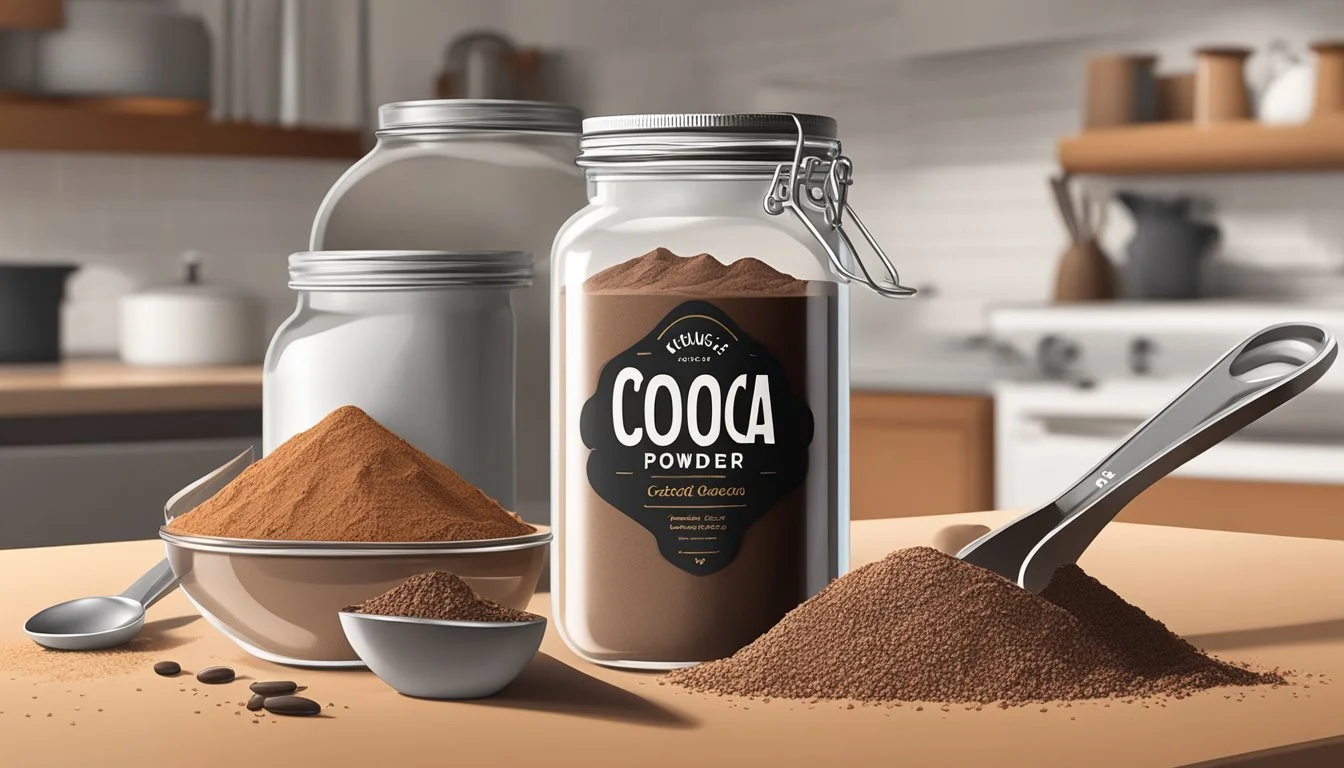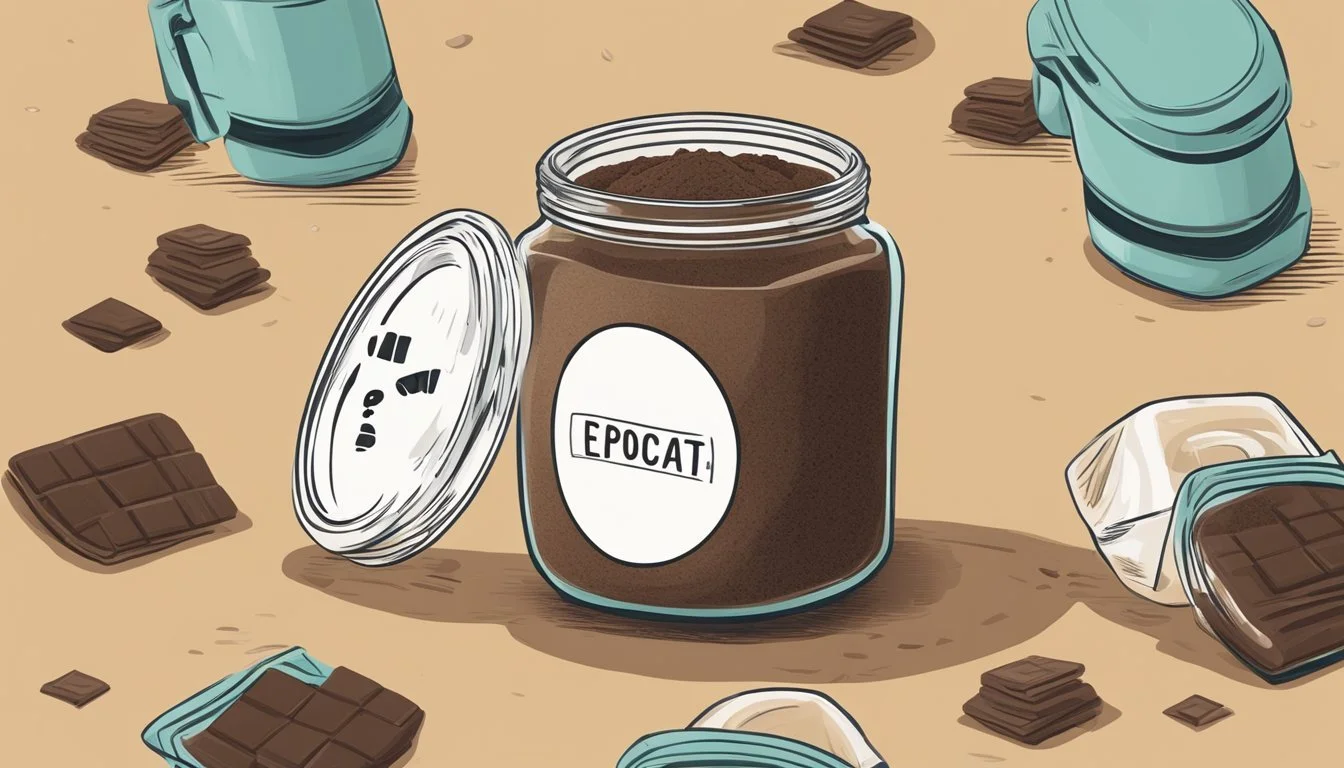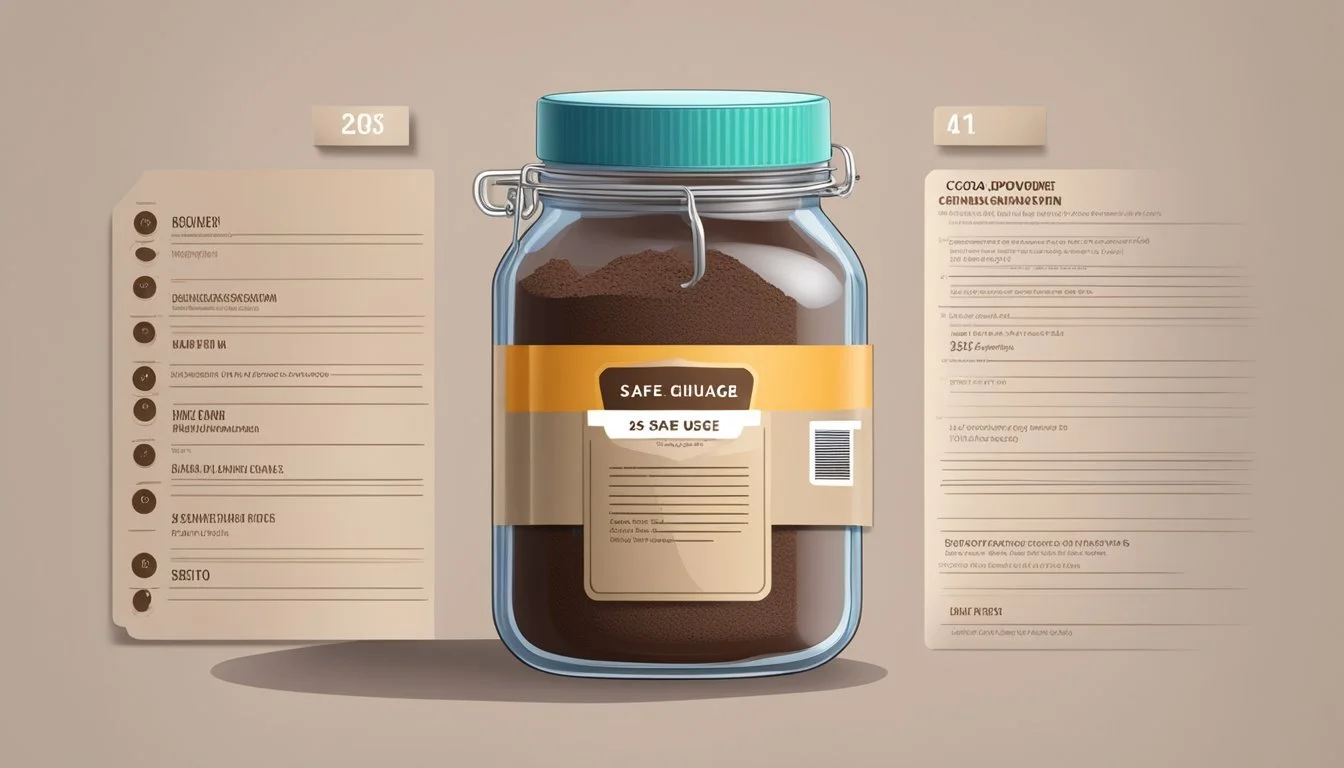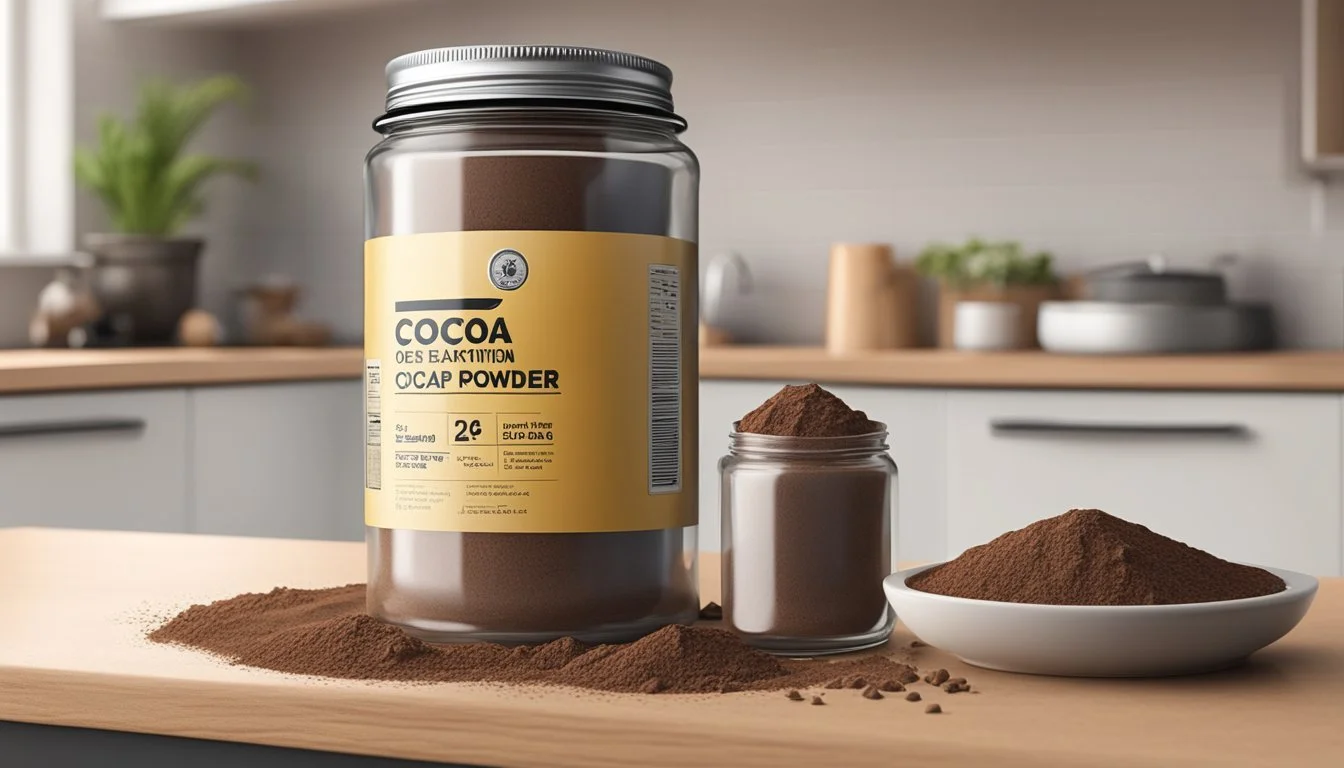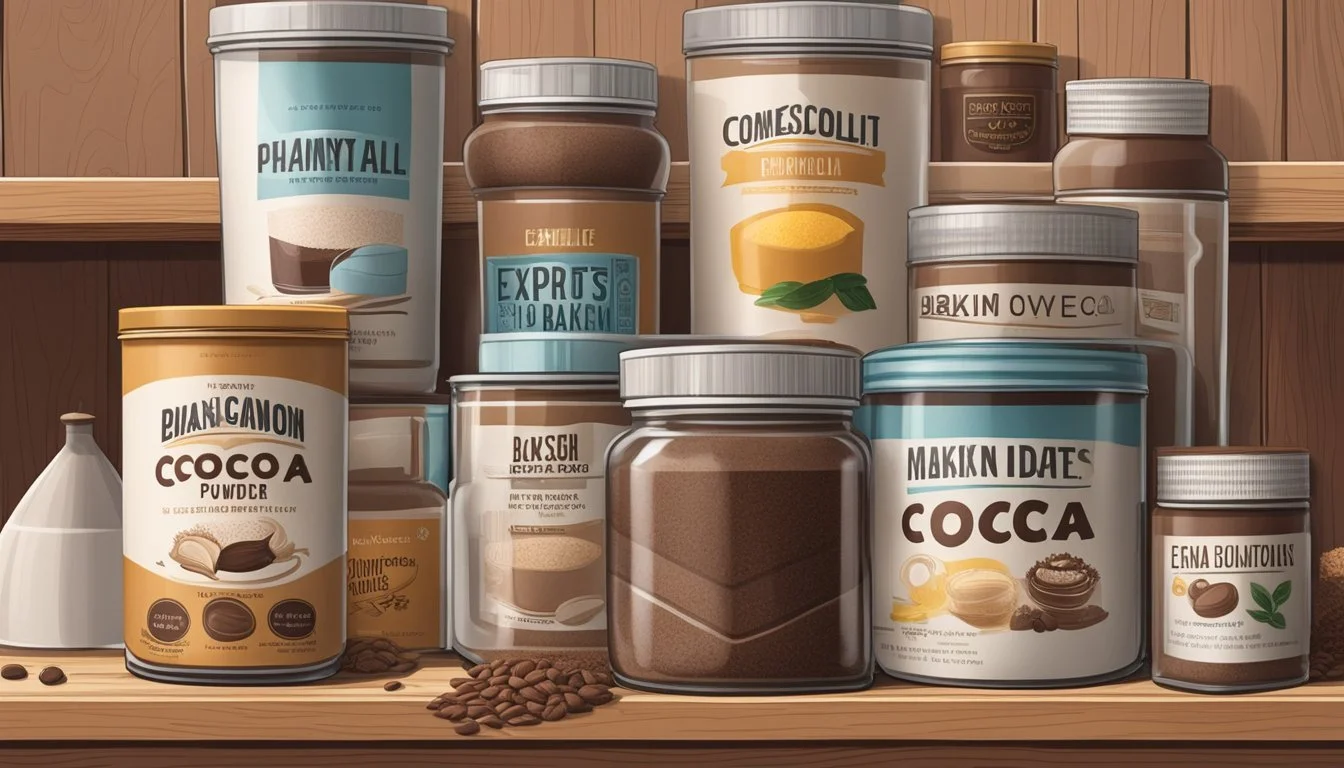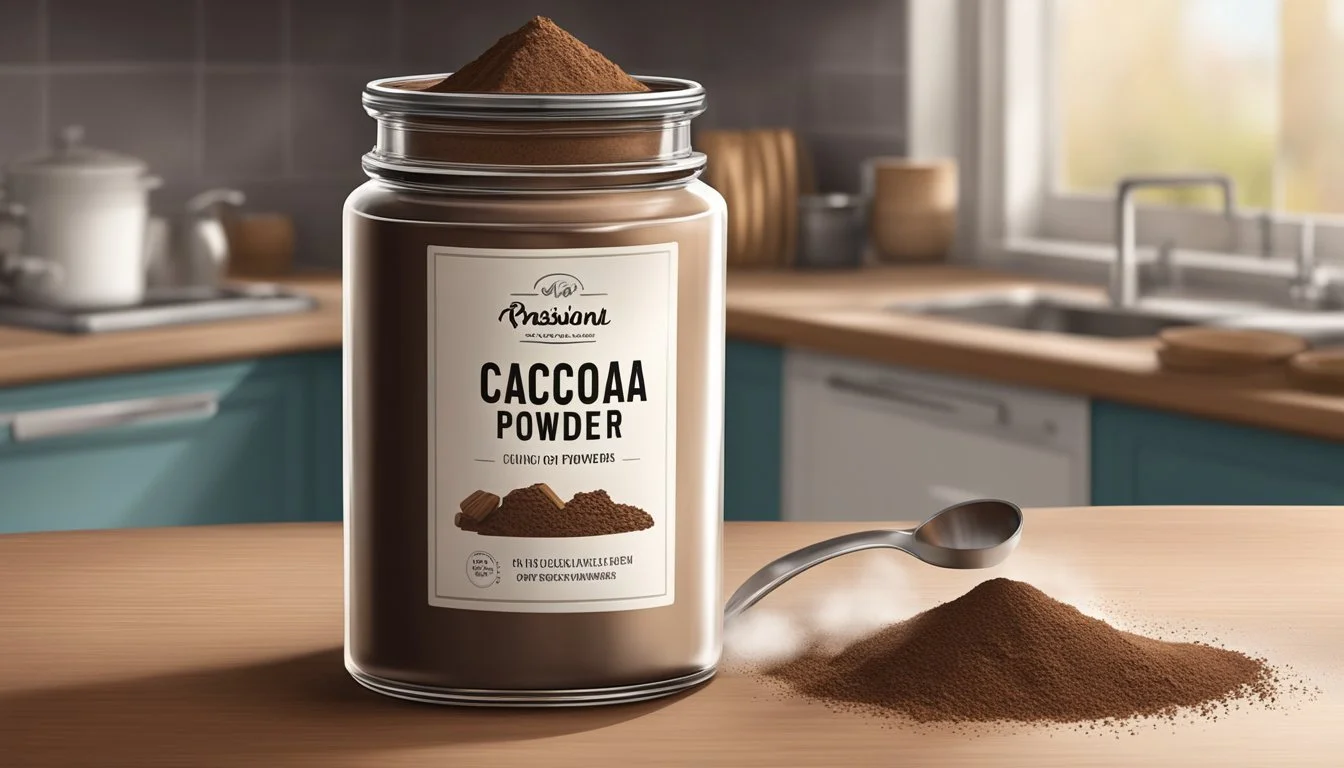Does Cocoa Powder Go Bad?
Shelf Life and Storage Tips
Cocoa powder is a staple ingredient in many kitchens, but does it ever go bad? The good news for bakers and chocolate lovers alike is that cocoa powder does not spoil or become unsafe to consume. While its quality may decline over time, especially in terms of flavor and potency, it remains safe to use if stored correctly.
Cocoa powder has a long shelf life because it is a dry, low-moisture product, which makes it less susceptible to bacterial growth and spoilage. Proper storage in a cool, dry place and in an airtight container can help maintain its quality for years beyond the expiration date.
Knowing this can save you money and reduce waste, as there's no need to discard old cocoa powder that still packs a decent flavor punch. Before tossing it out, try using it in your favorite recipes and see if the taste meets your expectations.
Understanding Cocoa Powder
Cocoa powder is a versatile ingredient used in baking, cooking, and beverages. It comes in various types which offer different flavor profiles and uses. Additionally, cocoa powder provides several benefits, both culinary and nutritional.
Types of Cocoa Powder
There are several types of cocoa powder, each distinct in composition and use. Unsweetened cocoa powder is pure and made from roasted cocoa beans. It is highly favored for its intense chocolate flavor, ideal for baking and recipes that require a strong cocoa presence.
Sweetened cocoa powder includes sugar and is primarily used in hot cocoa mixes and desserts where added sweetness is desired. Regular cocoa powder contains the natural fat content of cocoa beans, while low-fat cocoa powder has had a portion of the fat removed during processing, making it a preferred choice for those looking to reduce fat intake while still enjoying chocolate flavors.
Benefits and Uses
Cocoa powder is not only a key ingredient in various recipes but also offers several health benefits. It is rich in antioxidants, which help in reducing inflammation and improving heart health. Additionally, cocoa powder contains minerals like magnesium and iron, contributing to overall wellness.
In culinary contexts, cocoa powder is incredibly versatile. It enhances the flavor of cakes, cookies, and brownies, and is also used in making chocolate drinks and smoothies. Additionally, it's a staple in certain savory dishes, adding depth and richness to sauces and marinades. This makes it an invaluable addition to any kitchen.
Shelf Life and Expiration
Cocoa powder has a notably long shelf life compared to many other food items. Its longevity varies depending on whether it is opened or unopened and how it is stored.
Determining Freshness
Freshness of cocoa powder can be assessed through its appearance, smell, and taste. Cocoa powder should appear dry and free from clumps. If it starts to gather moisture, this is a sign that it might be losing its quality.
Smelling the cocoa powder can also help. A fresh batch will have a rich, chocolatey aroma. If it smells musty or off, it may no longer be good. While less common, tasting a small amount can confirm if it retains its chocolate flavor.
Storage conditions significantly impact freshness. Keeping cocoa powder in a sealed container, away from light and moisture, preserves its quality longer.
Expiration Date and Best-By Date
Cocoa powder doesn't suddenly spoil after the expiration date. The expiration date is more about peak quality rather than safety.
Cocoa powder typically comes with a best-by date, which indicates when it may start to lose potency. Beyond this date, its flavor might start to mellow, and it may not perform as well in recipes.
Unopened cocoa powder can last for several years past the best-by date if stored properly in a cool, dry place. Opened cocoa powder also remains usable for a significant time if kept in an airtight container. Regular checks on the powder's texture, smell, and taste can help determine its usability.
In summary, proper storage and regular checks are key to ensuring your cocoa powder remains fresh and flavorful.
Signs of Spoilage
Cocoa powder has a long shelf life, but it can spoil. Key spoilage indicators include visual, smell, taste, and potency changes.
Visual and Smell Indicators
Visually inspecting cocoa powder is the first step. If you notice any signs of mold or clumping, it likely has spoilage issues. Mold can appear as fuzzy spots or unusual discoloration on the surface.
Another sign includes an off smell or unpleasant odor. Fresh cocoa powder typically has a rich, chocolatey smell. If it smells rancid, stale, or lacks its usual aroma, it may no longer be good.
Clumping can indicate exposure to moisture. If the powder has absorbed water, it may clump and spoil more quickly.
Taste and Potency Changes
Taste is another critical indicator of cocoa powder spoilage. Fresh cocoa powder should have a strong, chocolatey taste. If the taste becomes bland, stale, or off, the powder may be losing its effectiveness.
Potency changes are also noticeable. Cocoa powder that has been stored too long may lose its strong flavor profile. Baked goods or drinks made with old cocoa may taste less intense.
Checking the taste involves cautious sampling. A small amount on the tongue should reveal any flavor deterioration. If it does not have the rich, bitter-sweet taste, it might be time to replace it.
Proper Storage Techniques
For cocoa powder to maintain its quality and flavor, specific storage conditions must be met. The following guidelines will ensure that cocoa powder remains fresh and usable for extended periods.
Ideal Storage Conditions
Cocoa powder should be stored in an environment that is both cool and dry. The optimal temperature range for storing cocoa powder is between 60°F (15°C) and 70°F (21°C). Avoid areas with high humidity, as moisture can cause clumping, mold growth, and degradation of quality.
Airtight containers are essential for protecting cocoa powder from airborne moisture and contaminants. A pantry or cupboard away from direct sunlight and heat sources is ideal. Exposure to light and heat can lead to a loss of flavor and overall quality.
Temperature:
Temperature (°F) Temperature (°C) 60-70 15-21
Humidity:
Humidity Level Low to None
Extending Cocoa Powder's Shelf Life
To maximize the shelf life of cocoa powder, several methods can be employed. Storing cocoa powder in a cool, dark place helps to preserve its flavor and texture. Refrigeration is not recommended, as it may introduce moisture. However, if the climate is exceptionally warm, the freezer can be an option.
When using the freezer, place cocoa powder in a tightly-sealed, freezer-safe container to prevent it from absorbing odors from other foods. Always return the container to the freezer quickly to minimize temperature fluctuations.
Key points for extending cocoa powder's shelf life:
Use airtight containers to limit exposure to air and moisture.
Store in a cool, dark place such as a pantry.
Avoid refrigeration; use the freezer responsibly if necessary.
Check for signs of spoilage, such as changes in smell, color, or the presence of mold, before use.
By adhering to these storage techniques, the quality and shelf life of cocoa powder can be significantly extended.
Safe Usage Guidelines
Proper use of cocoa powder ensures both safety and quality. Key considerations include knowing the difference between safe-to-use and potentially dangerous cocoa powder, and identifying when it should be discarded.
When to Use and When to Discard
Cocoa powder does not spoil like perishable foods but its quality degrades over time. Safe to use cocoa powder should be dry, free from moisture, and stored in an airtight container in a cool, dark place.
Indicators of degraded quality include a loss of potency in flavor or changes in texture, such as clumping. Dangerous cocoa powder may exhibit an off smell or visible mold, which indicate potential risk of food poisoning.
To determine if it’s safe to eat, check the “best before” date on the packaging. While this date is about quality rather than safety, any cocoa powder that feels moist or smells off should be discarded for health reasons.
Culinary Applications
Cocoa powder is a versatile ingredient essential in various culinary applications, from baking to beverages. Its rich chocolate flavor enhances numerous recipes, making it a staple in many kitchens.
Baking with Cocoa Powder
In baking, cocoa powder is a crucial component. It provides a deep chocolate taste in recipes like chocolate cake, brownies, and cookies. Its dry consistency helps balance moisture levels in batters and doughs.
When combined with baking soda or baking powder, cocoa powder can help leaven baked goods, giving cakes a lighter texture. Dutch-process cocoa is another option that provides a smoother, less acidic taste. Cocoa powder is also used to dust pans, preventing sticking and adding a subtle chocolate flavor to crusts.
Other Recipes and Beverages
Cocoa powder isn't limited to baking.
In drinks, it can be used to make hot cocoa or added to smoothies for a chocolatey boost. It can be sprinkled over oatmeal or incorporated into breakfast bowls for a decadent twist.
Mixing cocoa powder with steamed milk creates a comforting beverage. In savory dishes, a small amount can enhance the flavor of chili or mole sauces. Its versatility makes it a baking essential in both sweet and savory recipes.
Maintaining Quality and Flavor
Ensuring the quality and flavor of cocoa powder involves safeguarding its freshness and understanding the impact of proper storage.
Importance of Freshness
Freshness is critical to maintaining the potency and aroma of cocoa powder. Over time, cocoa powder's quality can degrade, leading to a more bland taste in culinary uses. Fresh cocoa powder should have a rich, chocolatey aroma and a deep brown color.
Fresh cocoa powder also retains its antioxidant activity, which is beneficial for health. These antioxidants, along with essential compounds and fat, contribute to the robust flavor profile of cocoa. To check if cocoa powder is still fresh, inspect it for any off-smells or changes in texture.
Impact of Storage on Flavor
Proper storage plays a significant role in preserving the flavor of cocoa powder. Store cocoa powder in an airtight container to protect it from moisture and air, which can cause it to lose aroma and potency.
Keeping cocoa powder in a cool, dark place away from humidity and direct sunlight helps maintain its quality and antioxidants. Improper storage conditions may lead to the development of unwanted off-flavors and even mold. Regularly check the cocoa powder for any signs of spoilage, such as clumping or a change in smell, to ensure it remains in top condition.
By following these storage guidelines, cocoa powder can remain flavorful and ready for use in various recipes, from baked goods to spices-infused dishes.
Advanced Preservation Methods
Proper storage techniques can significantly extend the shelf life of cocoa powder, maintaining its quality and potency for much longer periods. It is crucial to utilize methods that protect the powder from moisture, air, and temperature fluctuations.
Refrigeration and Freezing
While cocoa powder is naturally shelf-stable at room temperature, refrigeration can help prolong its usability. Store cocoa powder in an airtight container to prevent it from absorbing moisture and odors from the fridge.
Freezing cocoa powder is another effective method. Seal it in a freezer-safe, airtight container to protect against humidity and freezer burn. This method can help retain the cocoa's flavor and texture for several years. Label containers with dates to keep track of storage duration.
Vacuum Sealing and Alternative Containers
Vacuum sealing can significantly extend the freshness of cocoa powder by removing all air from the storage container. This method prevents oxidation and preserves the powder's potency. Use a vacuum sealer machine with specially designed bags for optimal results.
Alternative containers, such as glass jars with tight-sealing lids, also offer an excellent storage solution. These containers are less permeable to air and moisture compared to regular plastic containers. Silica gel packets can be added to further absorb any residual moisture inside the container.
Helpful Tips for Cocoa Powder Users
Proper storage and creative uses of cocoa powder can extend its shelf life and enhance your culinary creations.
How to Store Cocoa Powder
Storage is crucial to maintaining cocoa powder's quality. Keep cocoa powder in an airtight container to prevent moisture and air from degrading its flavor and smell. Store it in a cool, dark place, such as a pantry, away from direct sunlight and heat sources. Avoid refrigerating it, as this can introduce moisture. Using a glass or metal container is preferable over plastic, as these materials are less permeable to air and odors. Also, write the date of purchase on the container to easily track its age.
Creative Uses in the Kitchen
Cocoa powder is versatile and can be used beyond baking. Add a tablespoon to smoothies for a chocolatey boost without adding sugar. Mix it with coffee or make a hot cocoa drink for a comforting beverage. Cocoa powder can also enhance savory dishes; try adding it to chili or mole sauce for a rich depth of flavor. For a simple treat, sprinkle cocoa powder on fresh fruit like strawberries or bananas.
By employing these storage practices and creative uses, you can maximize the flavor and lifespan of your cocoa powder, ensuring it remains a kitchen staple for a long time.

